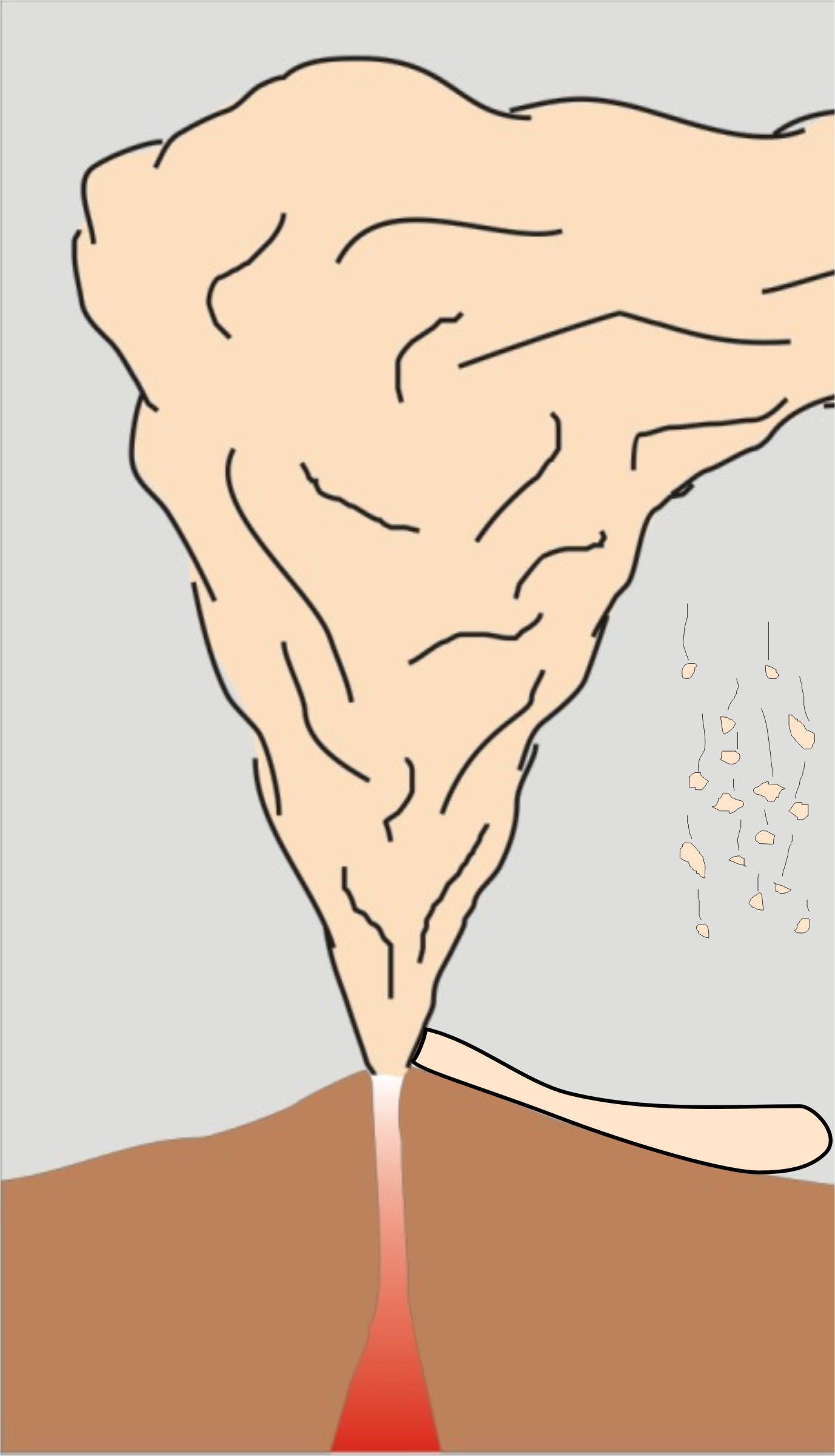
Gas Thrust Regime
The mixture of hot gas and rock that is erupted from a volcano exits
the vent as a high velocity jet. As mentioned in "Magma
Rising to the Surface," The magma can exit the vent at velocities
exceeding several hundred meters per second. In fact velocities can
exceed the speed of sound!
However, the entire jet does not have this velocity. The flow near the edges of the jet has been slowd by viscous drag of the conduit walls. As a result, the jet ends up with a velocity profle that has a radial Gaussian symmetry (Sparks, 1986).

How high does the jet go?
If the jet were the only part of the story, then the heights of exposive eruption would be very easy to calculate, and indeed, this is how volcanoes behave on Io, one of Jupiter's moon, which has no atmosphere.
On its own the jet cannot rise beyond the height "imparted" by its initial velocity, because it is denser than the surrounding air.
The maximum height of the jet is given by
1/2 * g *(V/g)^2 = Height
Where g is the acceleration due to gravity, and V is the jet velocity. Thus a 200 m/s jet would eject particles about 450 m into the air.
But volcanoes aren't cannons (usually)
We know that volcanoes eject material far higher than 450 m, in fact columns are known to have gone as high as 55 km (Sparks, 1986). For this to occur something else must happen. . .
The jet entrains air which then makes the column rise buoyantly.



